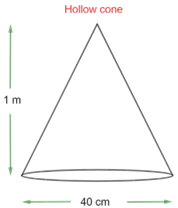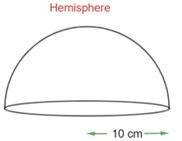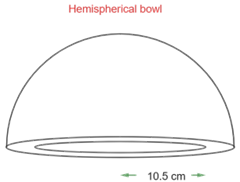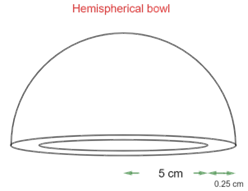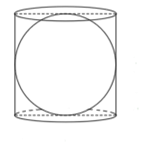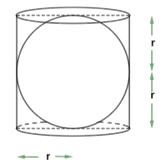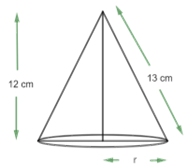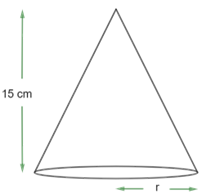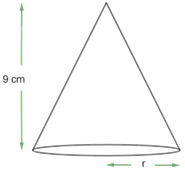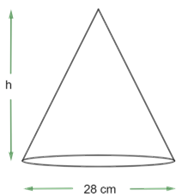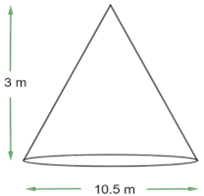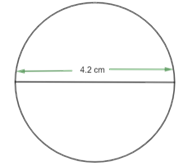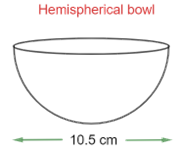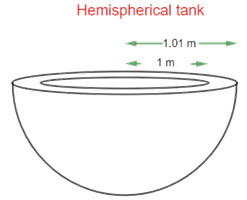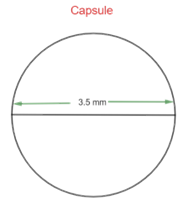NCERT Solutions for Class 9 Maths Chapter 11 Surface Area and Volume - FREE PDF Download




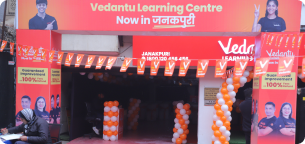

NCERT Solutions for Class 9 Maths Chapter 11 Surface Area and Volume
FAQs on NCERT Solutions for Class 9 Maths Chapter 11 Surface Area and Volume
1. The length, height and breadth of a room are 5 m, 3 m and 4m respectively. Find the cost of whitewashing the walls of the room and ceiling at the rate of Rs 7.50 per m2.
From the given data, we have,
Length (l) of room = 5m
Breadth (b) of room = 4m
Height (h) of room = 3m
We can notice that the four walls and the ceiling of the room are to be whitewashed.
So we can write as,
Total area to be whitewashed = Area of walls + Area of the ceiling of the room
= 2lh+2bh+lb
= [2×5×3+2×4×3+5×4]
= (30+24+20)
= 74
Therefore, Area = 74 m2
Also, it is given that,
Cost of whitewash per m2 area = Rs.7.50
Cost of whitewashing 74 m2 area = Rs. (74×7.50)
= Rs. 555 is the cost obtained.
2. It is necessary to make a closed cylindrical tank of height 1m and base diameter 140cm from a metal sheet. How many square meters of the sheet is required for the same? Assume π = 22/7
Let us assume that h be the height and r be the radius of a cylindrical tank.
Height of cylindrical tank, h = 1m
As we already know that,
Radius = half of diameter = (140/2) cm = 70cm = 0.7m
Therefore, r = 0.7m
So we can write,
Area of sheet required = Total surface area of tank = 2πr(r+h) unit square
= [2×(22/7)×0.7(0.7+1)]
= 7.48
Hence the total area of sheet required is 7.48m2
3. Why should we follow NCERT Solutions for Class 9 Maths Chapter 13?
NCERT Solutions for Class 9 Maths Chapter 13 are useful since they cover virtually all of the topics covered in board exams. These Solutions are prepared by subject matter experts with extensive expertise. As a result, they are accurate and dependable. The Solutions section contains the solutions to all of the problems from Chapter 13. As a result, students should consult them for guidance on how to write responses in exams. NCERT books are used to answer questions in the examinations, either directly or indirectly.
4. What are the topics covered under NCERT Solutions for Class 9 Maths Chapter 13?
The PDF of Class 9 Maths Surface Areas and Volumes refreshes students' understanding in this section. The plane and solid forms, as well as a brief explanation, are also discussed here. The students in Class 9 are asked to pay close attention to the shapes of different solids. It includes many formulas to determine surface areas and volumes of different shapes which is useful for the practical world.
5. Will I be wrong to say that the 9th Standard is easy?
Class 9 may feel like a breeze for some students, whereas it may be challenging for some. Every child has its own capabilities and perceives the difficulty level of a class from their own perspective. Class 9 introduces you to a lot of new subjects and concepts. Students should not feel overwhelmed by this. They should study regularly and plan everything to overcome stress. You can also take help from Vedantu app or Vedantu website for free of cost.
6. What is the best Solutions book for NCERT for Class 9 Chapter 13?
Many formulas and ideas are included in the Vedantu Solutions book. NCERT includes a few questions for students to answer. Vedantu provides the finest answers to all of these problems. When you're stuck on a difficult question, the NCERT Solutions for Class 9 Maths Chapter 13 will come in handy. We make certain that each question is answered correctly. Chapter 13 requires constant attention on formulas and asks for revision which is available on our site.
7. How can you help with Chapter 13 of Class 9 Maths?
Students can profit from the NCERT Solutions for Class 9 Maths Surface Areas and Volumes in a variety of ways. On the Vedantu website, NCERT Solutions for Class 9 Chapter 13 are accessible in PDF format. This will not only assist you in comprehending the test pattern but will also provide you with an in-depth explanation of the topics.




















 Watch Video
Watch Video










